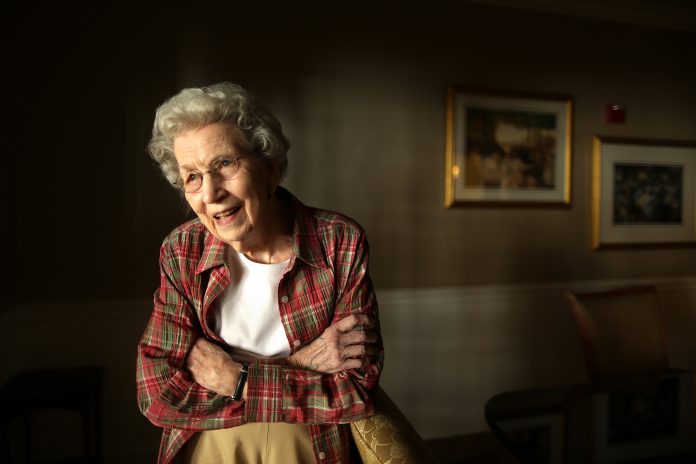
Around the time Mildred Fizer became the first woman in the nation to lead a state 4-H program in the 1960s, 4-H was in the process of fully combining organizations and clubs that were divided by gender and race into one, integrated program.
It wasn’t easy being the first woman to lead a state 4-H program. 4-H was preceded by corn clubs for boys and canning clubs for girls. Even after 4-H began to expand, for many years, girls tended to do home economics projects, while boys tended to do livestock and crop projects. There were lines that weren’t crossed often.
Fizer, of Morgantown, West Virginia, crossed the line and stepped into that role after serving several years as the West Virginia State 4-H Girls’ Club agent. That made her, at that time, not just the first, but the only woman among all of the other state program leaders. One of the challenges, Fizer told Farm and Dairy, was getting men in the program to understand that they needed to work with women, as well.
A lot has changed since then. The National 4-H Council has a female president and chief executive officer. There are many woman and men in leadership roles in 4-H, working together. Fizer, who celebrated her 100th birthday March 6, is regarded as a pioneer for 4-H in the state and nationwide. And, though she was the first, what she’s most proud of is that she was far from the last.
“It’s women like Mildred Fizer who have blazed the trail for us who have come behind her,” said Jennifer Williams, associate dean of programs and partnerships with West Virginia University Extension, and a lifelong 4-H’er.
Accomplishments
Fizer first started working as a West Virginia 4-H agent in 1946, after working as a teacher. She started as a 4-H agent in Cabell, County, where she was born.
She became the state girls’ club agent in 1953, then the leader of the state program in 1966. During Fizer’s years as the leader of the West Virginia 4-H program, the state’s program grew from 35,000 to more than 55,000, even as the state’s population declined.
Fizer has received honors including being inducted into the West Virginia Agriculture and Forestry Hall of Fame, the National 4-H Hall of Fame and West Virginia University’s Order of Vandalia, and being named a Distinguished Mountaineer by Gov. Jim Justice.
But her greatest accomplishment was “helping other women from other states become leaders,” Fizer said.
Inspiration
Williams always knew she wanted to work with extension, and though she didn’t meet Fizer till later on, she regards her as an inspiration.
“She is a kind and gentle soul,” Williams said. “She is certainly a pioneer and loves 4-H; loves children.”
Inspiring and developing skills leadership with others, in addition to working with children, were Fizer’s favorite things about her years in the 4-H program.
After retiring in 1978, she stayed active volunteering with groups like the American Cancer Society for many years, and established the Mildred Fizer Scholarship for 4-H’ers, a West Virginia University scholarship for incoming freshmen who participated in the 4-H program.
Megan Midcap, current 4-H extension agent for Lewis County, received the Mildred Fizer 4-H Scholarship when she was a freshman at West Virginia University. As part of that, she visited Fizer to talk about the 4-H program and Midcap’s experiences in 4-H.
“I didn’t even know at the time that she was the first female director of the 4-H program in the nation,” Midcap said. “She was more interested in asking me about my experiences than talking about her own accomplishments … when I think about it now, I’m just in awe.”
Changes
Fizer has seen the program change over the years, both while she was in it, and after she retired. One of the biggest differences now, she said, is that 4-H used to include mostly farmers. Now, 4-H has more participants from urban areas, as well as farmers.
That’s not the only way 4-H has changed. Midcap, who grew up in 4-H and worked with 4-H camps through her college years, sees a connection between Fizer’s accomplishments, and the position she is in now.
In the county she where grew up — Hancock — 4-H was less about livestock and more about non-livestock projects. She took projects like financial management and cooking, in addition to other projects.
But both as a 4-H’er, and now in her role as an extension agent, she sees similar numbers of boys and girls taking projects, whether they be in livestock, STEM or other non-livestock projects. And it’s not uncommon for women to be extension educators and leaders in the 4-H program.
“I keep remembering a quote that she said … ‘well, somebody had to do it,’” said Midcap. “And it’s so true. Somebody had to do it for 4-H as leaders … we’ve come a long way.”











Congratulations Ms Fizer! Thank you for all you have done! God bless you!